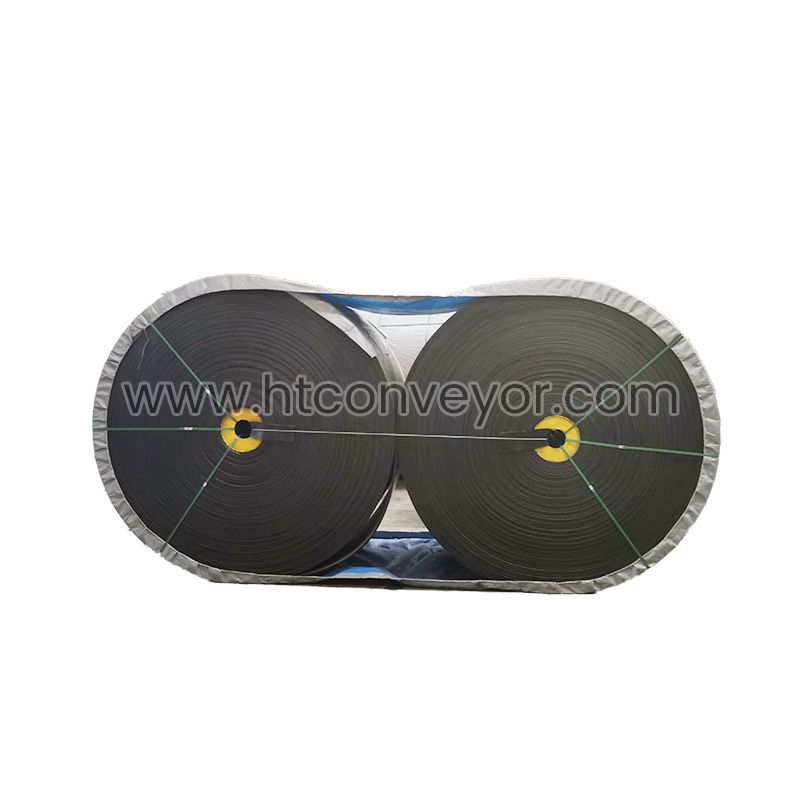Sep. 12, 2023
Machinery
Oil-resistant conveyor belts are specialized rubber belts engineered to withstand contact with various types of oils, greases, and petroleum-based substances. These belts are designed to maintain their integrity, durability, and functionality in environments where oil contamination is a common challenge. Let's delve into the key characteristics and primary applications of oil-resistant conveyor belts.
Characteristics of Oil-Resistant Conveyor Belts:
Oil-Resistant Cover Compounds: The most notable characteristic of these belts is their specialized cover compounds. They are typically made from synthetic rubber materials, such as nitrile rubber (NBR) or chloroprene rubber (CR), which possess inherent resistance to oil and grease. This resilient cover material shields the belt's core from oil-related damage.
High Tensile Strength: Oil-resistant conveyor belts are constructed with layers of synthetic fabric materials, such as polyester or nylon, providing high tensile strength. This ensures that the belt can withstand the tension and stress of conveying materials even in challenging environments
Abrasion Resistance: To endure the abrasive effects of oil-contaminated materials, these belts often feature strong abrasion-resistant properties. This protects the belt surface from wear and tear caused by the combination of oils and conveyed materials.
Flexibility and Toughness: Oil-resistant conveyor belts are designed to maintain flexibility and toughness even in the presence of oil or greasy substances. This flexibility ensures that the belt can navigate conveyor pulleys and idlers smoothly.
Resistance to Swelling: The rubber compounds used in these belts are formulated to resist swelling when in contact with oils. This characteristic prevents the belt from becoming bloated or distorted, preserving its operational integrity.

Main Uses of Oil-Resistant Conveyor Belts:
Mining and Quarrying: The mining industry often involves the extraction and transport of ores, minerals, and aggregates, which can be accompanied by oils and lubricants. Oil-resistant conveyor belts are vital for handling these materials efficiently and durably.
Agriculture: In agricultural applications, oil-resistant belts are employed to move grains, seeds, and agricultural products that may come into contact with oils or lubricants during processing or transportation.
Manufacturing and Production: Industries reliant on machinery and equipment that use oils and lubricants, such as automotive manufacturing and metalworking, utilize these belts for conveying raw materials, components, and finished products.
Recycling Facilities: Conveyor systems in recycling plants often handle materials that may contain residual oils or contaminants. Oil-resistant conveyor belts ensure the reliable and safe movement of recyclable materials.
Food Processing: In food processing facilities, where oils and greases are commonly used for cooking and production processes, these belts are crucial for the hygienic and safe movement of ingredients and products.
Woodworking and Timber Industry: The timber and woodworking industry employs oil-resistant conveyor belts to transport logs, lumber, and wood products, which can come into contact with sawdust and oils during processing.
Aggregate and Cement: The handling of construction aggregates, cement, and related materials frequently involves dusty or oily conditions. Oil-resistant conveyor belts are essential for maintaining efficiency and reliability in these environments.
Chemical Industry: In chemical processing plants, oil-resistant belts are used to convey various chemicals and raw materials that may contain oily residues or be exposed to oils during manufacturing processes.
In conclusion, oil-resistant conveyor belts play a crucial role in industries where oil contamination is a common challenge. Their robust construction, specialized rubber compounds, and resistance to oil-related damage ensure that materials can be conveyed safely and efficiently in such environments. From mining to food processing and beyond, these belts contribute to the seamless movement of materials while enduring the rigors of oily conditions.
Previous: What are the benefits of facial machine?
Next: Oil Resistant Conveyor Belt: Navigating the Challenges of Conveying in Oily Environments
If you are interested in sending in a Guest Blogger Submission,welcome to write for us!
All Comments ( 0 )